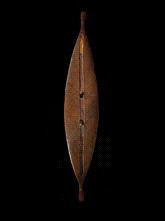Inkjet & Digital Printing
David Watson – Offering New Services with HP Digital Book Printing

Tuesday 27. April 2010 - With his background in the printing industry, Watson spotted a gap in the market for high-quality catalogues and books, displaying antique items in private collections.
Challenge
To develop Antiques Knives and Graphic Solutions’ services
Solution
To investigate the process of digital printing using an HP Indigo printer and to compare the results with conventional production
Results
To break into new markets by offering a range of digital added value product and services such as short run digital proofs
David Watson has been working in the printing industry since 1964, procuring a range of printed items for his customers. In 1987 he decided to pursue his interests in fi ne antiques and photography, establishing the companies Antique Knives Ltd and Graphic Solutions.
With his background in the printing industry, Watson spotted a gap in the market for high-quality catalogues and books, displaying antique items in private collections. In 1996 Watson made his first foray into creating a book for this market. In order to make the book standout and to represent all the items to their best advantage, Watson decided to produce all the photography himself. 3,000 copies of the 600 page book were made lithographically. The book was so well received by antiques enthusiasts; experts and collectors that Watson decided to offer this service to Antique Knives’ customers.
A Challenging Project
David Petty, antique arms and armour dealer, who also collects Aboriginal tribal art, commissioned Watson to produce a book recording the pieces in his collection. Watson spent a month photographing the items with a modern Japanese DSLR camera and started to compile the book. Before the artwork for the book could be finalised there was a delay over obtaining the foreword and the project was put on hold.
In the meantime Watson started work on his next project, a book recording highly engraved antiques and found that his camera was unable to capture the detail needed to accurately reproduce the delicate decoration featured on each item. Watson decided to invest in a new, medium format, DSLR camera.
“After running tests using my new camera and lighting, I was so impressed with the level of detail captured that in order to do justice to Dave Petty’s collection of Aboriginal art I re-took all 305 photographs using my new Mamiya 645/ Leaf Aptus equipment,” explained Dave Watson, proprietor, Antique Knives.
“After paying great attention to the photography it was essential that the maximum possible detail, finish, textures and character of each object was replicated in the final book.”
Streamlining Production
Watson worked with a highly respected print service provider (PSP) to produce 3,000 copies of the book conventionally.
“I am always striving to develop my companies and one way of doing this is to continually look at ways that I can improve the final product, provide added value to my customers and offer them something different,” said Watson. “I mentioned this to my regular PSP and he suggested that I take a look in his company’s digital press room.” Watson wanted to compare the results of the different processes and decided to test the HP Indigo press by running off a copy of Dave Petty’s book.
“I really wanted to put the HP Indigo press through its paces, and so I deliberately didn’t optimise the file for digital print. Literally the artwork was fed to the press and we just hit print,” explained Watson.
“Producing the book digitally was a revelation. When the book was printed conventionally, I spent three days and four nights passing each of the 31 sheets as they came off the press, and 20 percent of the sheets needed fine-tuning. Using the digital process, the book printed perfectly first time and I could proof the entire book immediately.”
High-quality
The book was designed to showcase the artefacts to best effect. In order to do this each object was photographed against a solid black background, special lighting and high-quality digital photography, enhancing the grain of the wood and the intricate and exquisitely carved tribal patterns that decorate the items.
“Printing block colours can be very challenging but the HP Indigo press 5500 produced these effortlessly. The ink application on the solid black backgrounds is dense and consistent, giving even coverage, with better resistance to finger marks,” said Watson.
“The images in the book are very highly detailed, some with an effective resolution of 1200 dpi. The HP Indigo press 5500 printed these with ease and matched the same job printed lithographically,” commented Watson.
Offering new services
Watson will be using digital technology to break into new markets by offering his customers added value products. “I have lots of ideas to maximise the benefits of digital printing technology. I plan to start offering my customers a new range of services that will help them make more profitable decisions, such as short-run, digital proofing; test editions for the market place and limited edition catalogues that are always up-to-date,” concluded Watson.
